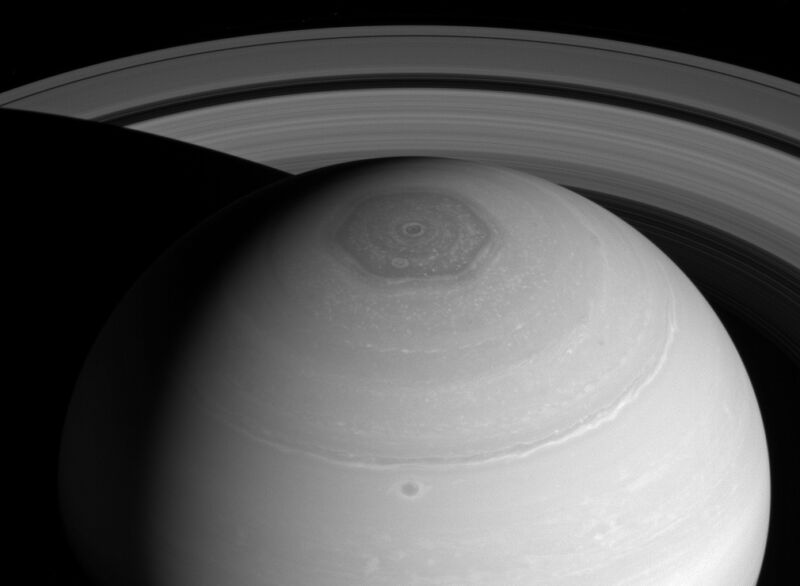What causes Saturn’s strange polar cloud hexagon?

Enlarge / This was the Cassini spacecraft's view of Saturn's polar hexagon in 2014. (credit: NASA)
Ever since Voyager 2 revealed Saturn's unique hexagon-shaped clouds at its north pole, the feature has been a puzzle, and the search for a combination of factors responsible has included computer modeling as well as physical modeling with things like rotating tanks of fluid.
Most ideas have centered around (pun intended) a phenomenon known as Rossby waves." The meanders of Earth's jet streams are a familiar example of this phenomenon. And, in various experiments, researchers have gotten Rossby waves to stabilize in a hexagonal pattern in conditions meant to relate to Saturn's pole.
But Harvard's Rakesh Yadav and Jeremy Bloxham felt these studies were a little shallow-not in a pejorative sense, but literally. On Earth, it's easy enough to decide how to size an atmospheric model, because it's very clear that it stops at the surface. For Saturn, it's a little more debatable how thick you need to make your model to represent the behavior of the giant planet's outer atmosphere. The researchers wanted their simulation to extend deeper to see what kind of impact convection from below would have.
Read 8 remaining paragraphs | Comments